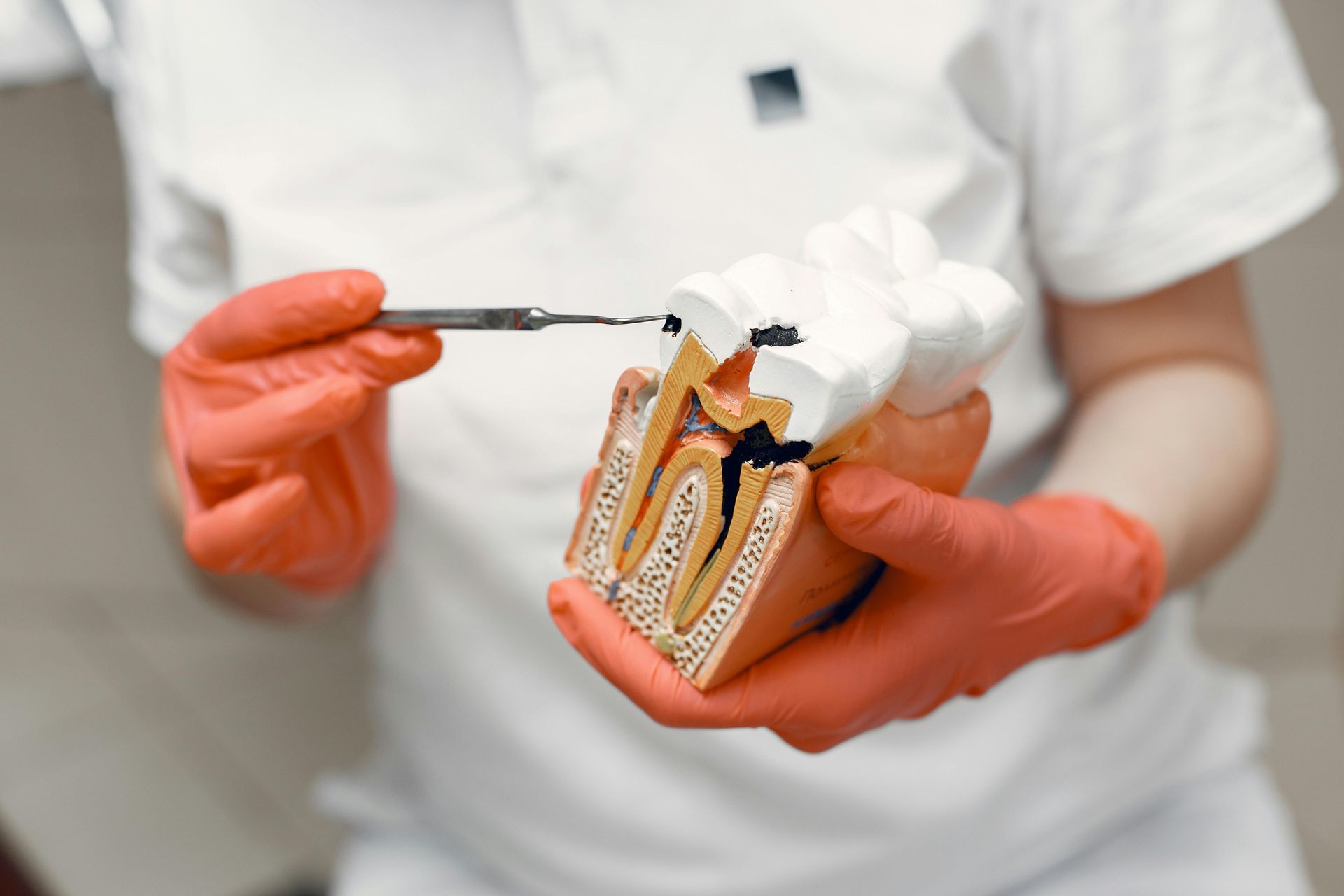Fresh Breath, Fresh Confidence: How to Treat Halitosis
There are few things as uncomfortable, or as socially awkward, as realizing you have bad breath. While everyone experiences it occasionally after some garlic fries or first thing in the morning, persistent bad breath can signal a more serious issue known as halitosis. This condition affects millions of people and is one of the most common reasons patients seek advice from their dentist. The good news is that with proper care, halitosis can usually be managed or even eliminated.
What Is Halitosis?
Halitosis is the medical term for chronic bad breath. Unlike temporary odor caused by food or morning dryness, halitosis lingers despite brushing, rinsing, or chewing gum. It can affect confidence, relationships, and even professional interactions. Because people often aren’t aware of their own breath odor, the condition may go unnoticed until a friend, coworker, or family member points it out.
Common Causes of Halitosis
There are several reasons why halitosis develops, and identifying the root cause is the first step toward treatment.
- Poor Oral Hygiene: Food particles left between teeth, around the gums, or on the tongue can break down and release unpleasant odors. Without regular brushing and flossing or routine dental cleanings, bacteria multiply, producing sulfur compounds that smell foul.
- Gum Disease: Infections of the gums, such as gingivitis or periodontitis, are major contributors to chronic bad breath. The bacteria responsible for gum disease thrive in pockets around the teeth and release strong-smelling toxins.
- Dry Mouth (Xerostomia): Saliva plays an essential role in washing away bacteria and food debris. When the mouth is dry; whether from dehydration, certain medications, or mouth breathing; bacteria flourish, leading to odor.
- Dietary Factors: Foods like garlic, onions, and spices contain volatile compounds that enter the bloodstream and are expelled through the lungs, causing noticeable breath odor. Coffee and alcohol can also contribute to dryness and lingering smells.
- Medical Conditions: Sometimes, halitosis is a symptom of underlying health issues such as sinus infections, acid reflux, diabetes, or liver and kidney disorders.
- Tobacco Use: Smoking and chewing tobacco not only dry out the mouth but also leave a distinct, unpleasant odor that is difficult to mask.
- Tonsil Stones: A commonly overlooked condition that affects the tonsils on the back of the throat. Small, hardened despoils of bacteria and dead cells become trapped in the crevices of the tonsils which can result in bad breath, metallic or bitter taste in the mouth, through irritation, or spots on the tonsils.
Preventing Bad Breath
The most effective way to manage halitosis is through prevention. Here are practical steps to keep your breath fresh and your mouth healthy:
- Brush and Floss Daily: Brush your teeth at least twice a day and floss once daily to remove trapped food and plaque. Don’t forget to gently brush your tongue, where bacteria often accumulate.
- Stay Hydrated: Drinking water throughout the day helps stimulate saliva production and rinse away food particles.
- Schedule Regular Dental Visits: Professional cleanings and exams allow your dentist to catch early signs of gum disease or other issues that may cause odor.
- Use Mouthwash Wisely: Antibacterial rinses can help, but they should not replace brushing and flossing. Alcohol-free rinses are best for avoiding dry mouth.
- Chew Sugar-Free Gum: Chewing gum encourages saliva flow and provides a quick way to freshen breath on the go. Xylitol is a great sugar alternative.
- Quit Smoking: Giving up tobacco improves not just your breath, but your overall oral and general health.
- Tonsil Stone Removal: Expression of the trapped deposits by you with salt water rinses, water flossed, or cotton swab.
When to See a Dentist
Occasional bad breath is normal, but if the problem persists despite good oral hygiene, it’s important to schedule a dental checkup. Your dentist can determine whether gum disease, cavities, or another oral condition is at play. If your mouth is healthy, they may refer you to a physician to rule out other medical causes.
Treatment Options
Depending on the cause, treatment for halitosis may include:
- Deep cleaning procedures for gum disease
- Fluoride treatments or fillings for cavities
- Saliva substitutes or special rinses for dry mouth
- Medical management if an underlying health condition is discovered
- Professional Tonsil Stone Removal for chronic tonsil stones that persist or cause irritation
Fresh Breath and Confidence Start Here
Halitosis is more than a minor inconvenience—it can affect your quality of life and may point to health concerns that require attention. The good news is that with consistent oral hygiene and professional dental care, most cases of halitosis are easily treatable.
At Amaze Dental in Kirkland, we understand how important a confident, healthy smile is to your everyday life. Our caring team offers comprehensive exams, gentle cleanings, and personalized treatment plans to address the root causes of bad breath. If you’ve been struggling with persistent halitosis, don’t wait any longer—fresh breath and peace of mind are just one appointment away.
Call Amaze Dental today
or
book your appointment online
to take the first step toward a fresher, healthier smile.
Subscribe to Dr. Annie's newsletter
Thanks for subscribing! You're now part of our community, and we're excited to share some advice, recommendations, and information with you. Stay tuned for great things ahead!
Please try again later.
Latest Articles





